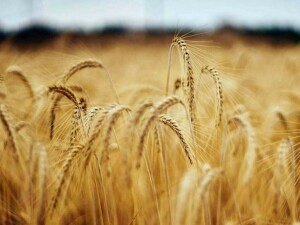Crescent Fibres Limited (PSX: CFL) was established in 1977, as a public limited company under the Companies Act, 1913 (repealed by Companies Act, 2017). The company’s principal business is the manufacture and sale of yarn. The company has two manufacturing facilities in the provinces of Sindh and Punjab, with a combined capacity of 67,056 spindles as of FY19. It specializes in the production of high value-added polyester/cotton, chief value cotton (CVC), and pure cotton yarns.
Shareholding pattern
Directors, CEO, their spouses and minor children are the major shareholders of the company holding 41 percent of the shares. Of this, close to 11 percent held by Mr. Imran Maqbool, the CEO of the company. About 8 percent is held by modarabas and mutual funds, while a little over 44 percent is distributed with the local general public.

Historical operational performance
For more than a decade, Crescent Fibres has mostly seen positive growth in its topline, with the exception of FY15 when it reduced by close to 12 percent. Profit margins, on the other hand, have been fluctuating, peaking in FY10 and FY13.
During FY15, sales revenue declined by around 12 percent, for the first time since FY07. This was attributed to global slow down in demand, followed by falling prices leading to lower margins. Most of the demand for Pakistani product generates from China; the latter witnessed slow growth rate which impacted Pakistan’s textile exports. This, coupled with a rise in cost of production as a percentage of revenue, also lowered margins. Expenses related to raw material and fuel are the key cost drivers for the company, with the former making up roughly 70 percent of the total cost. In FY15, fuel expense saw a rise, as a percentage of total cost. Thus, net profit reduced to a quarter of last year’s number.

In FY16, the company saw an increase in its sales revenue by 12.5 percent, despite the subdued global demand. This was as a result of expansion in capacity at one of their manufacturing facilities. However, this rise in revenue was offset by a more than corresponding increase in cost of production, which brought down margins. While almost all factors within cost of production saw an incline, raw material expense saw a 20 percent climb. Finance cost also saw an increase as a share in revenue; this was due to “increased leverage taken on to finance the capacity expansion”. Thus, profit margins fell further to less than 1 percent.

The company experienced further growth in its revenue by 11 percent owing to better selling prices. However, this could not be translated into higher profits or margins since the increase in cost of production exceeded the increase in revenue. This was as a result of an increase in raw material prices and other inputs. Although other income increased slightly to make up close to 2 percent of revenue, it was offset by a rise in finance cost, causing net margin to drop to 0.64 percent.

Topline continued to increase during FY18- by a little over 14 percent. This was due to higher end product prices. Since the company operates in the spinning segment within the textile sector, which has seen a low demand in the international market, the company seems to have redirected its sales to the domestic market; it has not exported since FY17. There has been some reduction in costs, as a percentage of revenue, which allowed gross margins to improve. Despite a rise in inflation and interest rates, the company managed to control its finance cost due to the repayments made during the year on long-term debts. This helped the benefit to trickle down and reflect in the bottomline which improved by 175 percent year-on-year.

Sales revenue maintained its growth trajectory as it grew by 19 percent during FY19. This was again attributed to higher end product prices. Although the company has not been exporting, however it is affected by the subdued global demand as it does provide raw material for other producers that are exporters. The overall global textile industry was also adversely affected by the US-China trade war. Costs decreased across the board as a percentage of revenue, with the exception of finance cost which rose to consume more than 2 percent of the revenue due to high interest rates. However, the company earnings increased by 66 percent year-on-year.
Quarterly results and future outlook
Revenue improved by 9 percent year on year during 9MFY20. This was as a result of better prices. With only marginal changes in costs otherwise, there was only a slight improvement in profit margins between the two periods. However, financials might be affected in the last quarter of FY20 due to the pandemic that has wreaked havoc across the globe and caused industries to shut and trade to come to a halt.

The future cannot be ascertained; however, what can be established is the shrinking of the world economy, its repercussions for the developing countries and a long recovery period.
























Comments
Comments are closed.